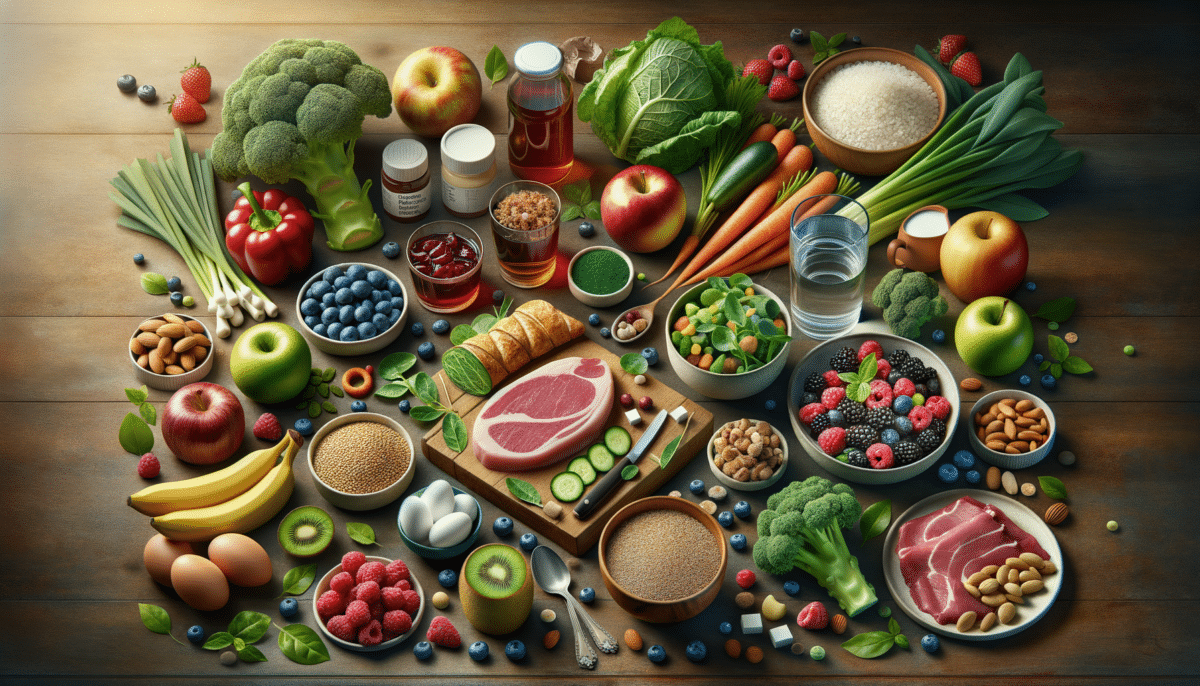Understanding the Role of Diet in Blood Sugar Management
Blood sugar management is a critical aspect of maintaining overall health, especially for individuals with diabetes or those at risk of developing it. Our diet significantly influences blood sugar levels, making it essential to understand which foods can help in lowering blood sugar effectively. The glycemic index (GI) is a valuable tool in this regard, as it ranks foods based on how they affect blood glucose levels. Foods with a low GI are absorbed more slowly, leading to a gradual rise in blood sugar. Incorporating low-GI foods into your diet can help stabilize blood sugar levels and improve insulin sensitivity.
Some examples of low-GI foods include whole grains, legumes, and non-starchy vegetables. These foods are not only rich in fiber but also provide essential nutrients that support overall health. Fiber slows down the digestion process, which can help prevent spikes in blood sugar levels. Additionally, healthy fats found in foods like avocados, nuts, and seeds can also play a role in blood sugar management by improving insulin sensitivity.
It’s important to note that while diet is a crucial factor, it should be part of a comprehensive approach to managing blood sugar levels. Regular physical activity, stress management, and adequate sleep are also vital components. By combining these lifestyle factors with a balanced diet, individuals can work towards achieving optimal blood sugar control.
Foods That Help Lower Blood Sugar Naturally
Incorporating certain foods into your diet can naturally help lower blood sugar levels. Leafy greens, such as spinach and kale, are excellent choices due to their high fiber content and low carbohydrate levels. They are also rich in antioxidants, which can reduce inflammation and improve insulin sensitivity.
Berries, including blueberries, strawberries, and raspberries, are not only delicious but also packed with vitamins, minerals, and antioxidants. These fruits have a low glycemic load, meaning they have a minimal impact on blood sugar levels. Additionally, they contain compounds that may improve insulin sensitivity, making them a beneficial addition to a blood sugar-friendly diet.
Whole grains like oats, quinoa, and barley are another group of foods that can aid in blood sugar management. They are high in fiber, which helps slow the absorption of sugar into the bloodstream. This gradual absorption can prevent significant spikes in blood sugar levels after meals. Incorporating these grains into your meals can provide a steady source of energy while supporting blood sugar control.
Finally, nuts and seeds, such as almonds, walnuts, and chia seeds, offer healthy fats, fiber, and protein. These nutrients work together to slow digestion and prevent rapid increases in blood sugar. Including a variety of these foods in your diet can contribute to better blood sugar regulation and overall health.
The Impact of Meal Timing and Portion Control
While the types of foods consumed play a significant role in blood sugar management, meal timing and portion control are equally important. Eating smaller, more frequent meals throughout the day can help maintain stable blood sugar levels. This approach prevents large fluctuations that can occur with larger, less frequent meals.
Portion control is crucial when it comes to managing blood sugar levels. Overeating, even healthy foods, can lead to an increase in blood sugar levels. It’s important to be mindful of portion sizes and to listen to your body’s hunger and fullness cues. Using smaller plates and serving utensils can be a simple yet effective strategy to prevent overeating.
Timing meals strategically can also have a positive impact on blood sugar levels. Consuming a balanced breakfast that includes protein, healthy fats, and complex carbohydrates can set the tone for the rest of the day. This combination provides sustained energy and helps prevent mid-morning blood sugar crashes.
Additionally, incorporating snacks that combine protein and fiber, such as an apple with almond butter or a handful of nuts, can help maintain blood sugar levels between meals. By focusing on meal timing and portion control, individuals can better manage their blood sugar levels and reduce the risk of complications associated with high blood sugar.
